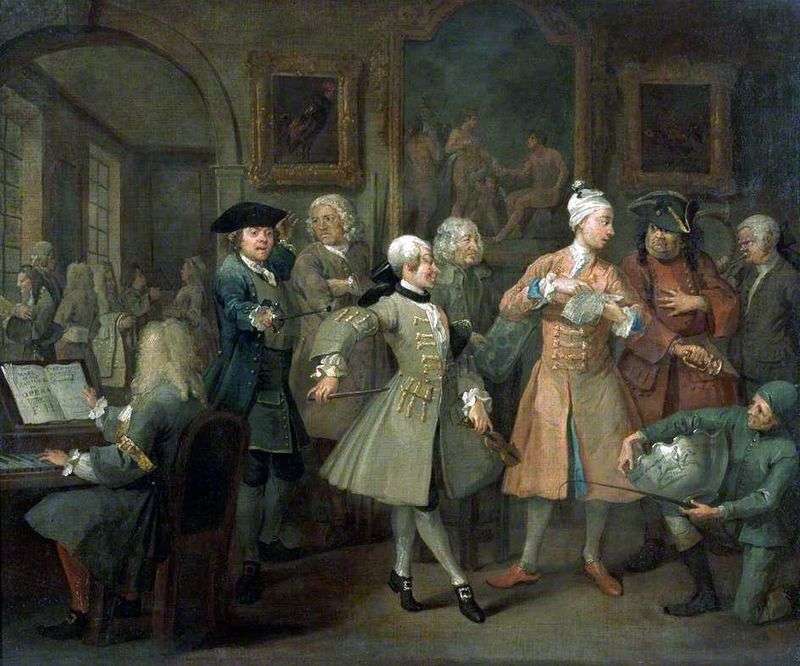
The series tells of a young man named Tom Rackwell who, after the death of his father, received a good inheritance, but did not use it wisely, and squandered in debauchery and debauchery and after his stay in the debt prison ended his journey in a madhouse. The picture shows the second episode of the cycle – secular reception.
All vied with each other and try to achieve the location of the newly-made rich man, demonstrating his dignity before him. The dance teacher got into position, the gardener shows the park plan, the musician plays the clavichord, and the jockey demonstrates his cup.
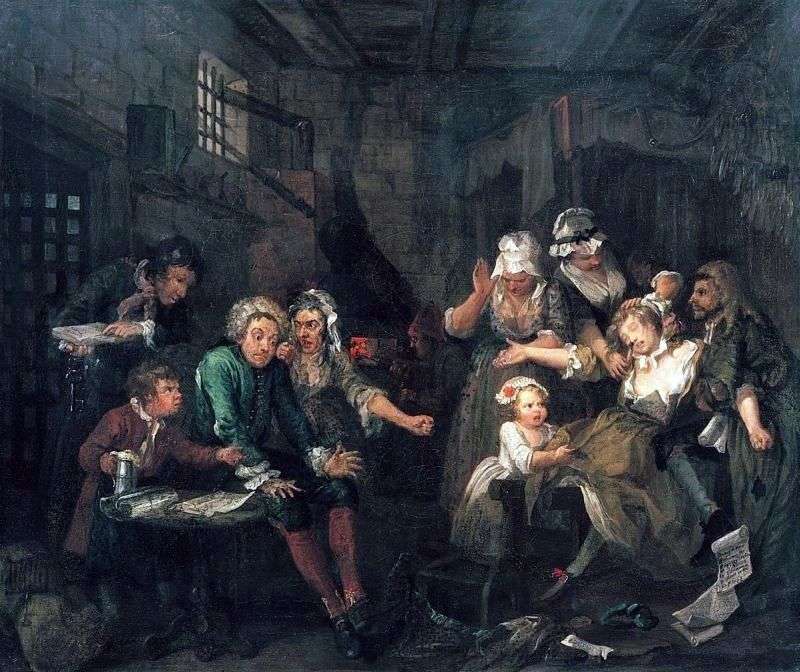 In Flit prison by William Hogarth
In Flit prison by William Hogarth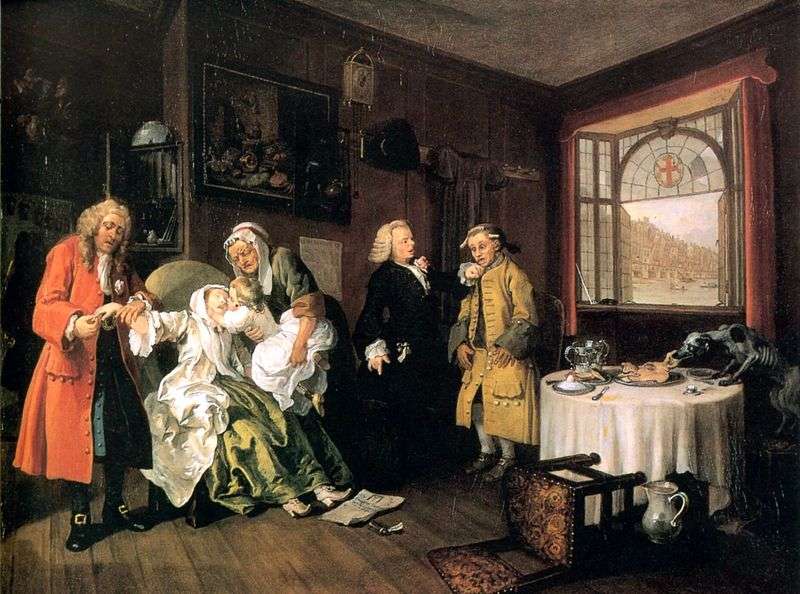 The Countess’s Death by William Hogarth
The Countess’s Death by William Hogarth The marriage contract by William Hogarth
The marriage contract by William Hogarth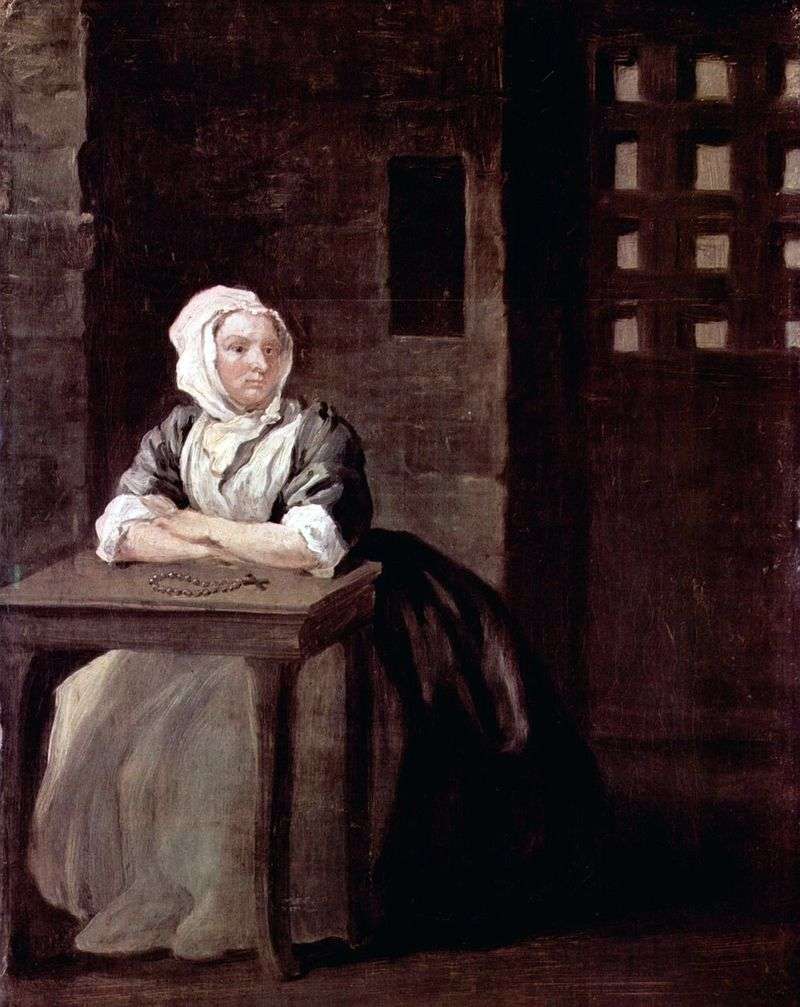 Sarah Malcolm by William Hogarth
Sarah Malcolm by William Hogarth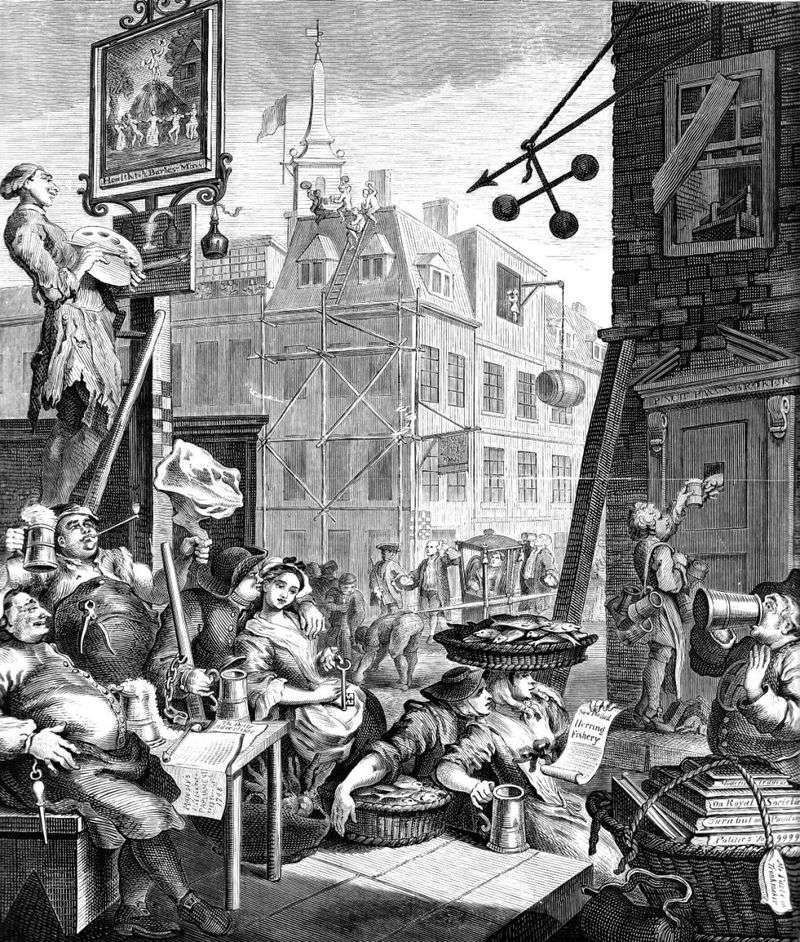 Piva Street by William Hogarth
Piva Street by William Hogarth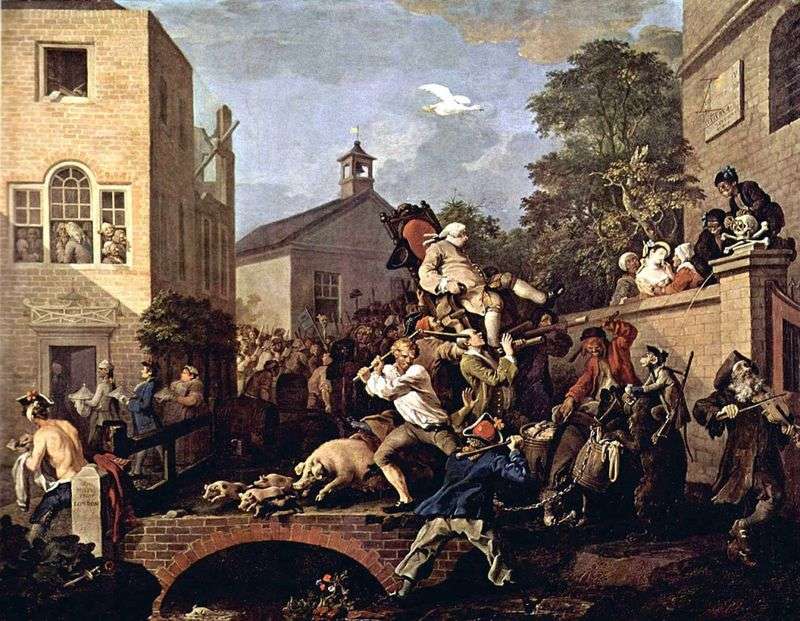 Triumphant procession by William Hogarth
Triumphant procession by William Hogarth Soon after the wedding by William Hogarth
Soon after the wedding by William Hogarth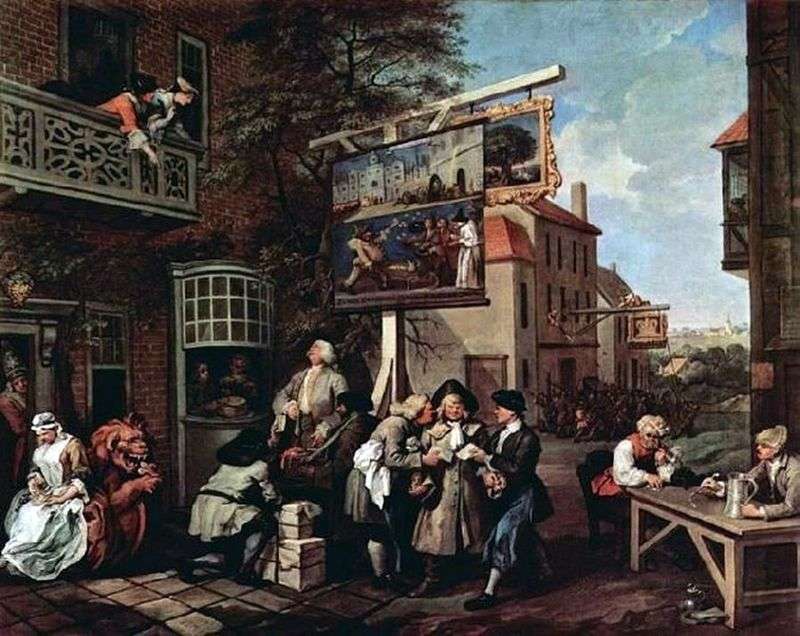 Bribery of votes. From the series “Elections to Parliament” by William Hogarth
Bribery of votes. From the series “Elections to Parliament” by William Hogarth